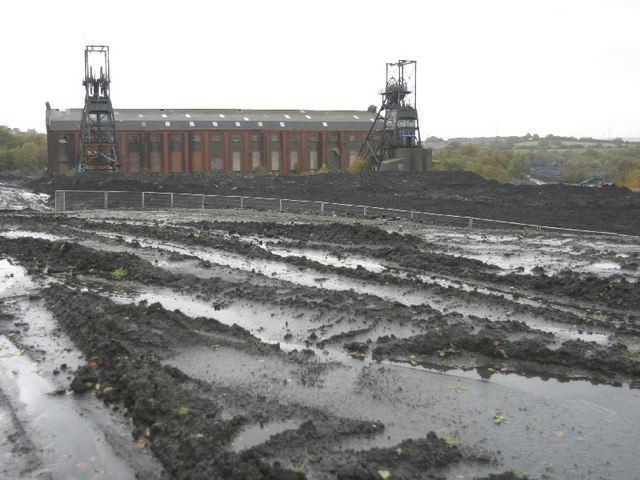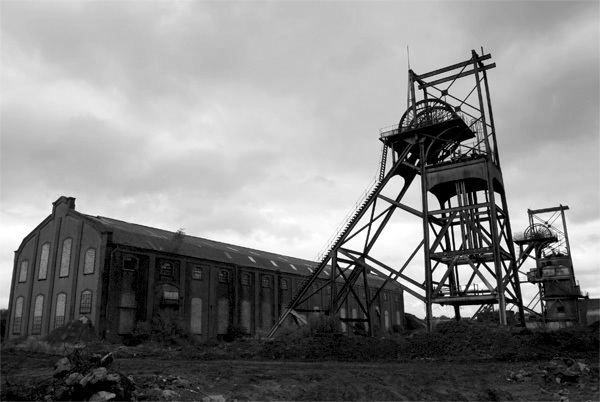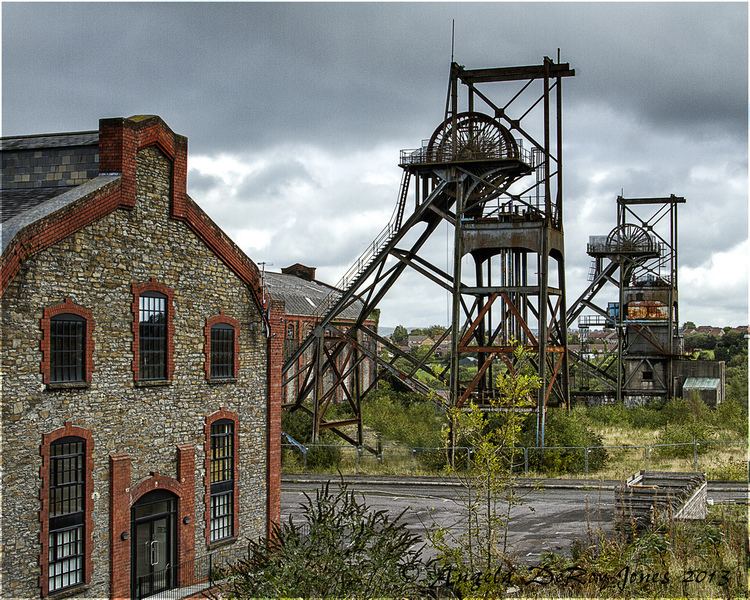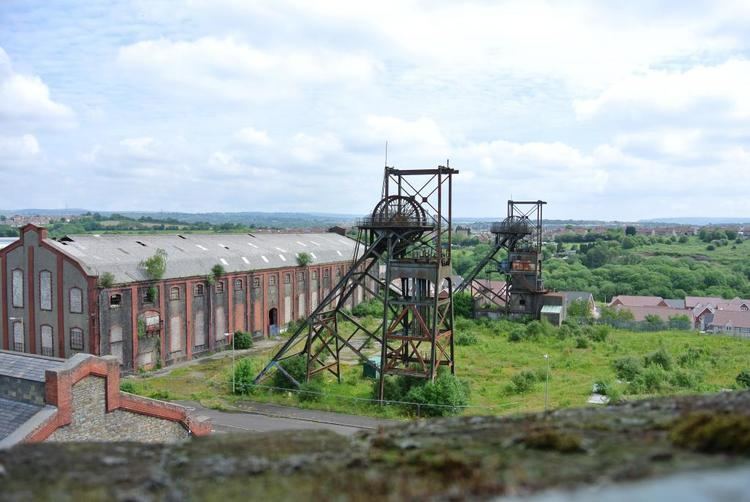Products Steam coal Closed 1991 | Country Wales Active 1909 - 1991 Opened 1905 | |
 | ||
Company Powell DuffrynNational Coal Board Companies PD Ports, National Coal Board | ||
Penallta colliery 28 may 2016
Penallta Colliery was a coal mine, located close to Hengoed in the Rhymney Valley in the South Wales Valleys. A coal mine which in 1935 held the European record for coal wound in a 24-hour period, it is now the site of an original redevelopment project which will make use of the former pit head buildings.
Contents
- Penallta colliery 28 may 2016
- Penallta colliery now and then
- History
- Nationalisation
- Redevelopment
- References

Penallta colliery now and then
History

Situated near Hengoed, in 1905 Powell Duffryn began the sinking of Penallta colliery, and had employed 291 men by 1908. The two shafts Nos.1 (downcast 783 yards (716 m)) and 2 (upcast 750 yards (690 m)), and at the time were the deepest in the South Wales Coalfield. The first coal was raised in 1909, with the railway served by the Cylla branch which connected it to both the Rhymney Railway from the Ystrad Mynach north junction, and the Newport, Abergavenny and Hereford Railway. By 1923 there were 2,395 men employed, producing from the Six Feet seam, and at peak production during the 1930s, there were in excess of 3,200 men employed. In 1930 it produced 975,603 tons, and in 1935 it held the European record for coal winding.
Nationalisation

In 1947, the mine was nationalised as part of the governments post-World War II regeneration scheme, and became owned by the National Coal Board. Investment was made, and in the late 1940s a Meco-Moore Cutter Loader was installed, one of the first power loaders to be used in British mines, and as a result the Minister of Fuel and Power Hugh Gaitskell made a visit in December 1949. The colliery formed a rugby union club in 1952 called Penallta RFC, and in 1954 produced 500,000 tonnes of coal. During 1960 the shafts were extended to reach 800 yards as part of a scheme, which also included electrification of the shaft winding engines.

But access to coal was becoming more difficult, and by the 1970s only 700 men were producing 210,000 tons yearly from the Lower Nine Feet and Seven Feet seams - both 20% of the figures at the height of production. The colliery survived the 1984-1985 miners strike, and made impressive gains in production after the return to work. But it was closed by British Coal on 1 November 1991 with the last shift led out by a brass band, the last deep mine working in the Rhymney Valley.
Redevelopment

In 1996, a vision for Penallta was put forward by Caerphilly County Borough Council, in partnership with Groundwork Wales and various local community, statutory and voluntary agencies. Stage1 of the project converted 180 hectares of derelict land transformed into a community park. Stage2 created more access, through the installation of a bridle path and cycle tracks, and a stone footpath.

To complete redevelopment of Penallta, the council developed a business park on the site, and have now agreed a development project which will result in a housing estate on part of the site, whereby the listed building status of the headgear of the two shafts are proposed to be part of a pioneering housing development scheme.
Several of the colliery buildings and structures are Grade II* listed, including the colliery baths, engine hall and the pit's headframe.
